An exoplanet is a planet located outside of our Solar System. The study of exoplanets is crucial, especially in finding planets similar to Earth that might host life.
Key Facts & Summary
- The first possible evidence of an exoplanet was noted in 1917 but was not recognized as such.
- The first exoplanet detected was Gamma Cephei Ab in 1998. It was not confirmed until 2003 though, and generally, it is believed that the two planets orbiting the pulsar PSR 1257+12 are the first confirmed discovery. The discovery was announced in 1992.
- The first planet discovered orbiting around a Sun-like star was 51 Pegasi b.
- In respects to a planet similar to Earth, the first was discovered in 2014 named Kepler 186f. It is also located in the habitable zone of its star.
- The habitable zone is a region around a star where liquid water could exist on the surface of a solid planet.
- All the known exoplanets fall into categories depending upon their size, mass, and orbital positions.
- The closest star system and closest planetary system to the solar system is at 4.37 light-years away. It is named the Alpha Centauri system.
- If life is discovered on other planets, then the panspermia hypothesis would greatly become more likely the answer on how life on Earth was established.
- There are over 4.000 exoplanets that have already been confirmed.
- Almost 5.000 other exoplanets are candidates waiting to be approved.
- Over 3.000 planetary systems have been discovered.
- About 700 systems have more than one planet.
- There are about 5 methods used for the detection of exoplanets. A sixth one has been implemented recently.
- In 2009 NASA launched a spacecraft named Kepler, specifically to look for and detect exoplanets.
- Among exoplanets, rogue planets have also been detected. They are planets that have been pushed out of their star system.
Since our knowledge of the Universe has expanded, searching for planets outside our Solar System has been a priority in the search for extraterrestrial planets and new habitable worlds that might sustain us.
The question of whether or not we are alone in the universe, or if there are other places such as Earth, may have well begun since our world has been mapped, and mostly explored. The first possible evidence of an exoplanet was noted in 1917, but it was quickly dismissed.
As technology progressed, many other possible discoveries of exoplanets were proposed as early as 1988 but were only later confirmed. In 1992 the first detection of an exoplanet was finally confirmed. The radio astronomers Aleksander Wolszczan and Dale Frail announced the discovery of two planets orbiting the pulsar PSR 1257+12.
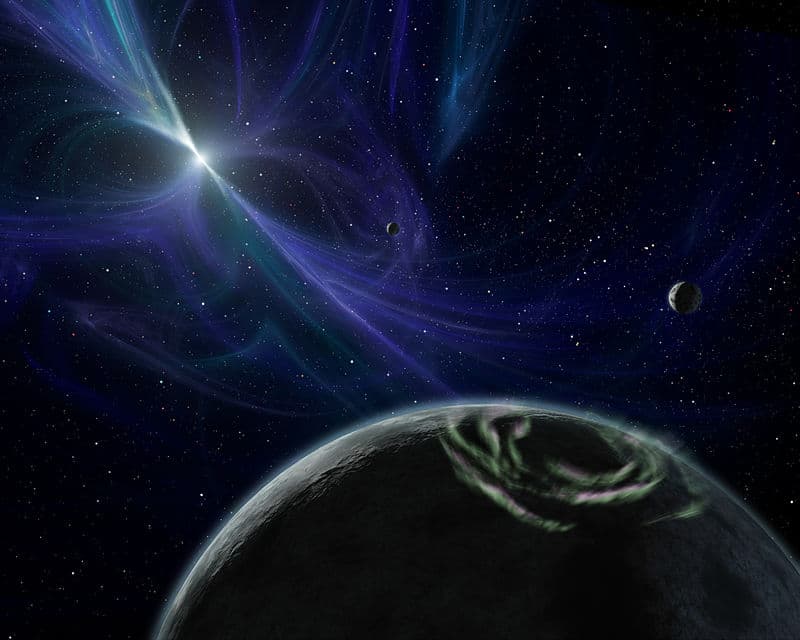
Ever since then, the discovery of exoplanets became somewhat of a priority, and naturally, a great interest to humanity. Technology progressed and new methods of detection were implemented specifically for this task.
Methodology
The detection of an exoplanet is a difficult task, mostly because exoplanets are outshined by the stars they orbit. To circumvent this, about 5 primary methods of detection have been developed in order to find these planetary bodies.
- Radio velocity: a planet causes a star to wobble.
- Direct imaging: where the glare of stars is blocked in order to see objects nearby.
- Astrometry: the study which observes the star’s movements in relation to nearby stars.
- Gravitational microlensing: the light of the star is observed if it is dent by a planet’s gravitational pull.
- Transit: This is the most prolific form of finding exoplanets – The method in which a planet passes between its star and Earth, thereby dimming its star’s light.
Almost 97% of all the confirmed exoplanets have been detected through these indirect techniques of detection. Recently, the techniques of singular optics have been applied in the search for exoplanets.
Formation
It is theorized that planets form within a few to tens of millions of years of their star-forming. Observations of different systems of varying ages will help us to better understand how our own system developed. Generally, planets form in a gaseous protoplanetary disk. They accrete hydrogen/helium envelopes.
These envelopes cool and contract over time and depending upon the mass of a planet, some or all of the hydrogen/helium is eventually lost into space.
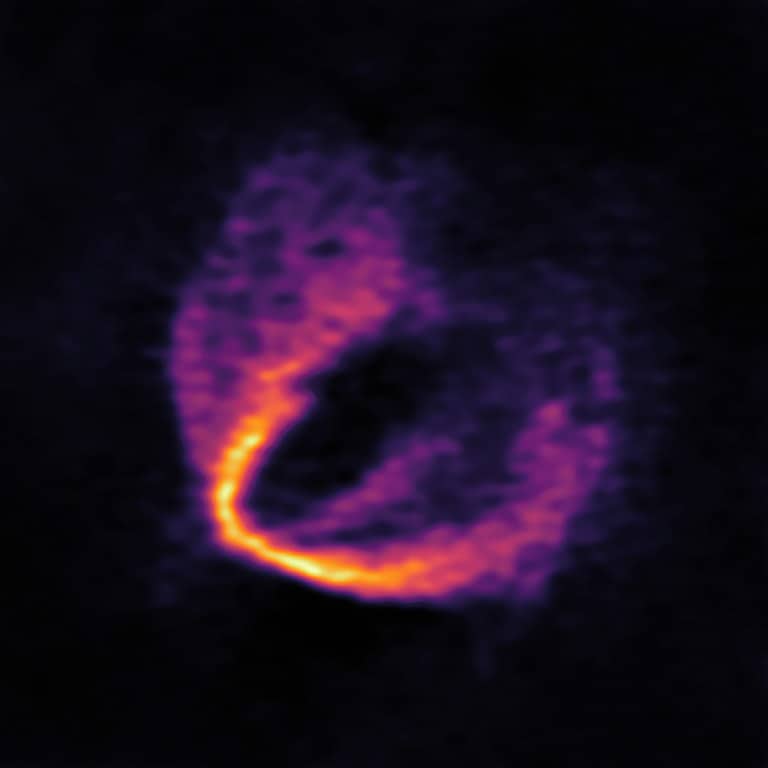
Numbers
There are 4.099 exoplanets that have already been confirmed with 4.729 other exoplanets being candidates waiting to be approved. These exoplanets are divided and located in 3.045 confirmed star systems. About 700 of these systems have more than one planet. These numbers represent the exoplanets discovered up until 2019.
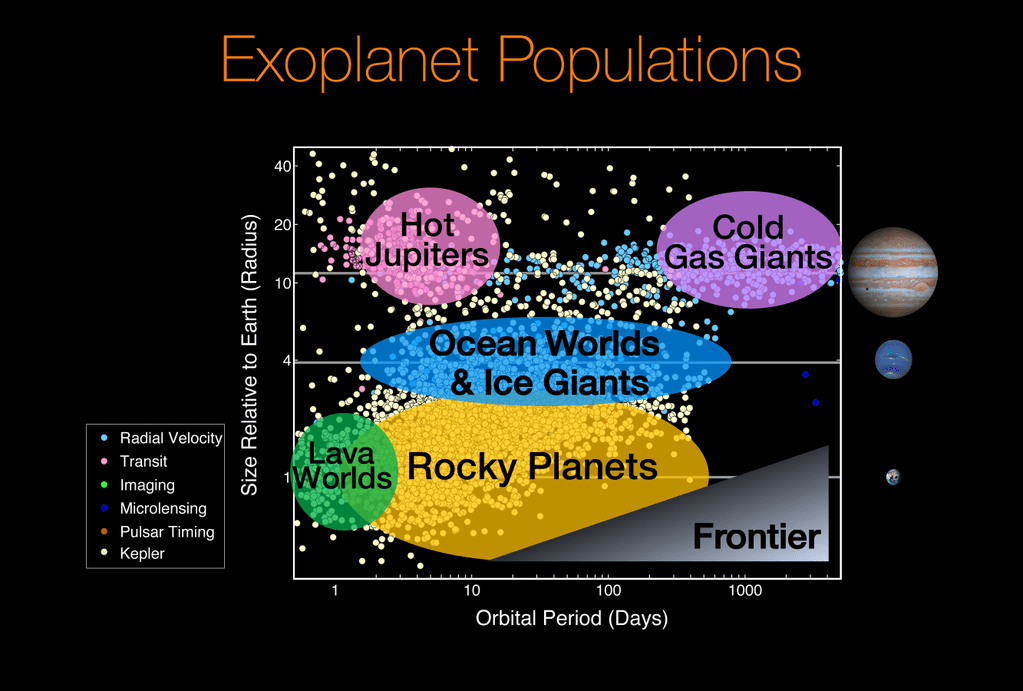
It is speculated that there are over 40 billion exoplanets present in the Milky Way galaxy alone, 11 billion of them orbiting Sun-like stars. In the Universe, it is speculated that there should be about 1-2 maybe even more planets for almost every star.
Considering that there are more than 200 billion galaxies out there, the numbers surely contain a lot of digits.
General Features – Types of Exoplanets
The types of exoplanets discovered have features similar to the planets of our solar system. They can be categorized in:
- Neptune-like – over 1.300 have been confirmed.
- Super-Earth – over 1.250 have been confirmed.
- Gas Giant – over 1.200 have been confirmed.
- Terrestrial – over 160 have been confirmed.
- Unknown – more than 10
When it comes to the gas giant exoplanets, super-Jupiter’s are planets similar to Jupiter but much bigger. There are also Mini-Neptune’s often referred to as gas dwarfs who are usually smaller than Uranus or Neptune.
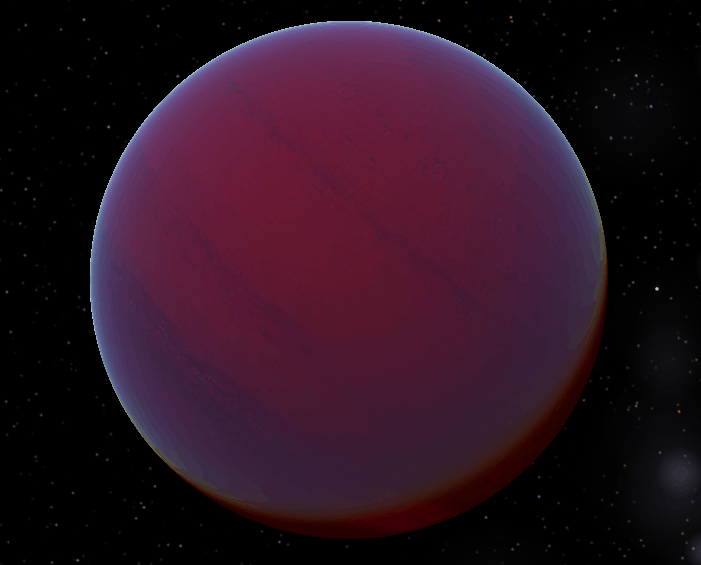
When it comes to super-Earth exoplanets, they usually have a greater mass than Earth and usually, do not imply anything about the surface conditions or habitability.
This type of planet is the only one that isn’t present in our solar system but astronomers believe that we may have had one in the past that was expelled from our system or collided with a gas giant.
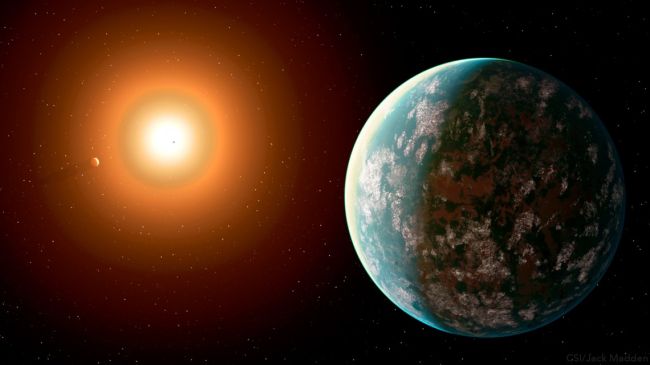
Some of the first exoplanets discovered were the PSR 1267+12 B and C which were pulsar planets. Found in 1992, they orbit the rapidly spinning remains of a massive star that exploded as a supernova.
One of these planets is a Super-Earth planet. When it comes to the first Earth-sized planet, Kepler 186f was the first to be discovered in 2014. It is circling in the habitable zone of its star.
In the end, there are many different types of planets ranging from all sizes, shapes, colors, atmospheres, orbits, and maybe unique features until proven otherwise.
Eccentricity
Many of the exoplanets discovered so far have a higher orbital eccentricity than the planets of our Solar System. Those with low orbital eccentricities usually orbit very close to their star and are tidally locked to it.
This for the moment proves that our Solar System’s unusually low eccentricity is rare. Low eccentricity is needed for habitability.
Habitability
One of the main goals of exoplanetology is to find life outside our Solar System. As the field grows along with technology, someday maybe, we will find extraterrestrial life. Many exoplanets similar to Earth have already been discovered. They orbit their star in the habitable zone and are usually given the Kepler name and a designation.
Future plans
There are many projects going on about the discovery and studying of exoplanets. New telescopes, both on Earth and space are prepared to be launched or have been launched already. In the next years with technology improving, who knows what planets await to be discovered. The Kepler mission is still on-going to this day.
Did you know?
- More than 22% of Sun-like stars have Earth-sized planets in their habitable zone.
- There is at least one planet on average per star with about 1 in 5 Sun-liked stars having an Earth-sized planet in the habitable zone.
- There could be about 1 trillion exoplanets in the Milky Way.
- At least one exoplanet has been discovered to have an exomoon. It was discovered in 2013 orbiting the Kepler-1625b exoplanet.
- Several exoplanets have been discovered to have atmospheres. The first to be observed was HD 209458 b in 2001.
- There is an exoplanet that has a tail like a comet. KIC 12557548b is an exoplanet very close to its star, and because of this, it leaves a trail of cloud and dust.
- Rogue planets are everywhere, and it is theorized that there could be 2 rogue planets per star in the whole universe.
- K2-18 b is probably the best candidate for habitability presently known.
- The first picture that was ever taken of an exoplanet happened in 2004. 2M1207b is a planet with five times the mass of Jupiter.
- The easest type of exoplanets to find are hot Jupiter’s since they’re massive and fast, making their signal easier to detect.
- The smallest exoplanet that has been found is named Kepler-37b. It is smaller than Mercury.
- It is quite possible that there are more planets in the universe than stars.
- Exoplanets orbit any kind of star.
Sources:
Image source:
- https://en.wikipedia.org/wiki/PSR_B1257%2B12#/media/File:Artist’s_concept_of_PSR_B1257+12_system.jpg
- https://upload.wikimedia.org/wikipedia/commons/thumb/a/a7/ALMA_Discovers_Trio_of_Infant_Planets_ALMA_Discovers_Trio_of_Infant_Planets.jpg/768px-ALMA_Discovers_Trio_of_Infant_Planets_ALMA_Discovers_Trio_of_Infant_Planets.jpg
- https://upload.wikimedia.org/wikipedia/commons/thumb/2/2e/ExoplanetPopulations-20170616.png/1024px-ExoplanetPopulations-20170616.png
- https://upload.wikimedia.org/wikipedia/commons/1/11/Brown_Dwarf_HD_29587_B.png
- https://cdn.mos.cms.futurecdn.net/HDnfG5HEHppQqEeV5jEmqP-650-80.jpg
